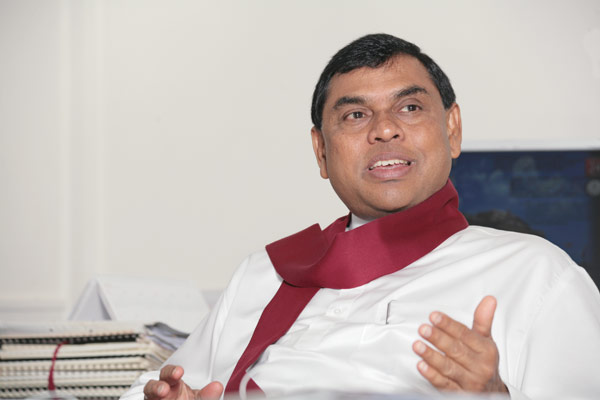Newly appointed Finance Minister Basil Rajapaksa has begun stakeholder discussions to assess their challenges and prospects. The initiative will be kicked-off today at the Temple Trees with separate meetings with seven sectors. They are textile and apparel; gem, diamond and jewellery; coconut; ICT; food and beverage; electrical and electronics; and boat building.
Industries Minister Wimal Weerawansa, other subject specific State Ministers, State Ministry Secretaries, officials from the Treasury, Sri Lanka Customs, Department of Imports and Export Control, Export Development Board, National Gem and Jewellery Authority, Information and Communication Technology Agency, Coconut Development Authority and association representatives from the sectors will meet with Rajapaksa.
All the seven sectors meeting the Finance Minister today are key foreign exchange earners and contribute significantly to the national economy.
The most significant and dynamic contributor, the apparel and textile manufacturing industry, last year recorded $ 4 billion, despite the COVID-19 pandemic. During the first half of this year the industry posted $ 2.3 billion. It contributes 40% of the total exports of the country with over one million people directly employed in the sector. Apparel and textile industry has set a target of $ 8 billion by 2025.
The gem, diamond and jewellery industry recorded $ 148 million last year, contributing 1.5% to the total exports of the country. Earnings from the sector in the first half of the year was $ 127 million. Sri Lanka is the ninth-largest exporter of precious stones to the global market and one of the five most important gem bearing nations of the world.
In 2020, export earnings from coconut products were $ 665 million and during the first half of the year it recorded $ 388 million. It contributed 7% of the total exports last year. The composition of coconut exports includes coconut kernel products, coconut fibre products and coconut shell and others. Sri Lanka is the fourth-largest exporter of coconut products to the world.
ICT services are the fourth largest export earner of the country and in 2020 it was $ 1 billion up from $ 900 million in 2019. The ICT sector serves a number of industry verticals with over 300 companies at present. These include communication, apparel and textiles, banking financial services and insurance, healthcare, manufacturing, media, retailing, transportation, travel and leisure and many more.
A highly skilled talent pool combined with the cost-effective operational ability makes Sri Lanka’s ICT Industry one of the most profitable industries to date. There are close to 150,000 employed in the sector in which over 300 ICT firms are operating. The industry is aiming for $ 5 billion in exports in 2022.
Earnings from the food and beverage sector was $ 256 million in 2020, contributing to 3% of the total exports of the country. In the first six months of the year, it recorded $ 118 million. There are over two million employed in the sector.
In 2020, India, Maldives, the US, UAE and Singapore were the top export markets. In place of the customary processed food products that are high in sugar, salt and fat, Sri Lankan processed food and beverages are mainly based on natural fruits, vegetables, and cereals like rice and millet that are naturally gluten-free.
Electrical and electronics last year recorded $328 million and contributed 3.31% to the total exports of the country. During the first half this year, it generated $ 201 million. The sector employs over 3,500 people. Sri Lankan Electrical and Electronic service providers develop and manufacture products relevant to power generations and transmissions, the automobile industry, industrial automation, electrical device development, consumer electrical item development and biomedical instrument development observe ROHS and WEEE regulations, and in conformity with the ILO requirements.
Boat and ship building is a new sector recognised in the National Export Strategy of Sri Lanka and last year it generated only $ 2.39 million due to the adverse impacts of the pandemic. However, the industry has earned $ 2.5 million in the first half of the current year. There are 22 boat yards devoted to exports and over 2,000 people are directly employed in the sector. (CdeS)
(FT)

